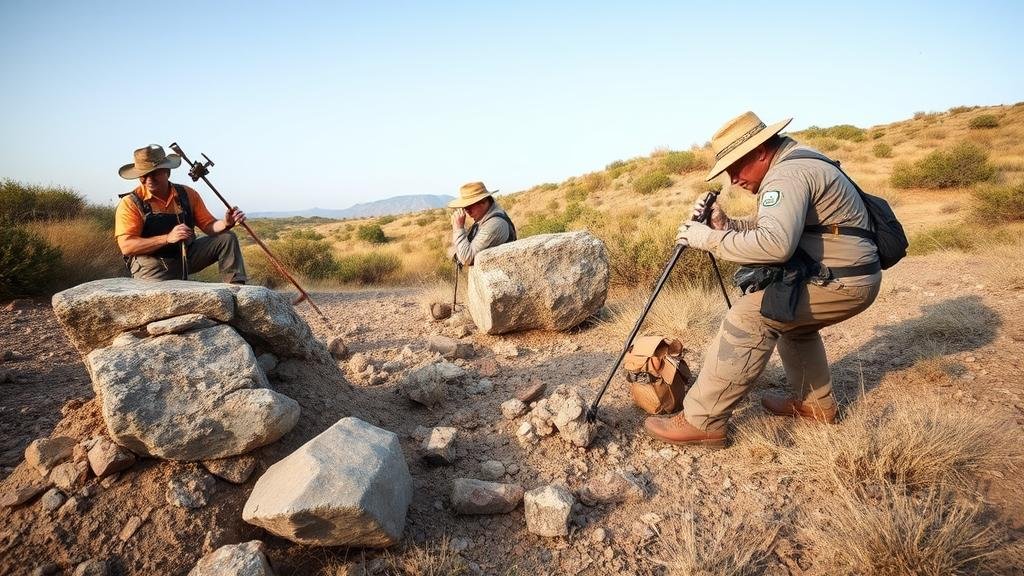Detecting for Stone Tools and Relics Along Ancient Hunting Grounds
Detecting for Stone Tools and Relics Along Ancient Hunting Grounds
The study of ancient human behavior and environmental adaptation often revolves around the analysis of stone tools and relics found in hunting grounds. These artifacts serve not only as a record of the technological advancement of our ancestors but also provide insights into their hunting strategies, social structures, and interactions with the environment. This article delves into the methods used for detecting stone tools and relics, and discusses their archaeological significance.
The Significance of Stone Tools and Relics
Stone tools are among the earliest artifacts produced by human beings, dating back over 2.5 million years. r presence in archaeological sites helps researchers understand several aspects of prehistoric life, including:
- Technology: The evolution of tool-making techniques indicates advancements in cognitive skills and resource management.
- Subsistence Strategies: Different types of tools provide evidence of hunting methods, dietary preferences, and food processing techniques.
- Social Structures: The distribution and complexity of tool styles suggest social learning and cultural transmission among groups.
Detecting Techniques for Stone Tools
Detecting stone tools and relics requires a combination of ground survey methods and advanced technologies. The following techniques are commonly employed:
- Surface Survey: Archaeologists walk systematically across potential sites to visually inspect for artifacts on the surface. This method is effective in areas where erosion has exposed underlying layers.
- GIS and Remote Sensing: Geographic Information Systems (GIS) allow for the analysis of landscape features, while remote sensing technologies can identify anomalies in topography or vegetation that may indicate archaeological sites.
- Excavation: When surface surveys yield promising results, stratigraphic excavation is conducted to uncover buried layers. This method allows for the recovery of artifacts in context, providing a chronological framework for analysis.
Case Studies of Stone Tool Detection
Several notable case studies illustrate the effectiveness of these detection methods in ancient hunting grounds:
- Olduvai Gorge, Tanzania: This site has yielded numerous stone tools belonging to early hominins, allowing researchers to trace the evolution of tool-making practices. Surface surveys combined with excavation revealed stratified deposits critical for understanding chronological developments.
- Clovis Sites in North America: Discoveries of Clovis points across various sites highlight sophisticated hunting techniques employed by Paleoindian societies. Excavations at sites like Blackwater Draw in New Mexico revealed not only the tools but also associated megafauna remains, painting a vivid picture of the hunting strategies employed.
Challenges in Detecting Stone Tools
Despite advancements, several challenges remain in the detection of stone tools and relics:
- Environmental Factors: Vegetation, terrain, and climatic conditions can impede visibility and accessibility of sites.
- Site Destruction: Modern development, agriculture, and natural erosion can lead to the loss of archaeological contexts.
- Identification Skills: Accurate identification of stone tools requires expertise and experience, a skill set that can be lacking in amateur archaeologists.
Future Directions in Archaeological Detection
The future of detecting stone tools and relics is promising, with ongoing advancements in technology poised to enhance archaeological methods:
- Machine Learning: The application of machine learning algorithms to analyze aerial images may increase efficiency in identifying potential archaeological sites.
- 3D Mapping: Advances in 3D imaging provide detailed reconstructions of sites, allowing researchers to visualize and analyze spatial relationships among artifacts.
- Community Involvement: Engaging local communities in archaeological practices not only aids in the preservation of artifacts but also enriches the research with local knowledge.
Conclusion: The Importance of Continued Research
As our understanding of ancient human behavior evolves, so too must our methodologies in detecting stone tools and relics. Comprehensive research combined with cutting-edge technology can uncover the complexities of our ancestors lives and their interactions with the environment. This ongoing exploration is crucial for preserving cultural heritage and informing contemporary discussions about human adaptation and resilience.
For anyone interested in archaeology or the study of prehistoric humans, understanding these detection methods provides a foundational knowledge that can facilitate further exploration and discovery in the field.


